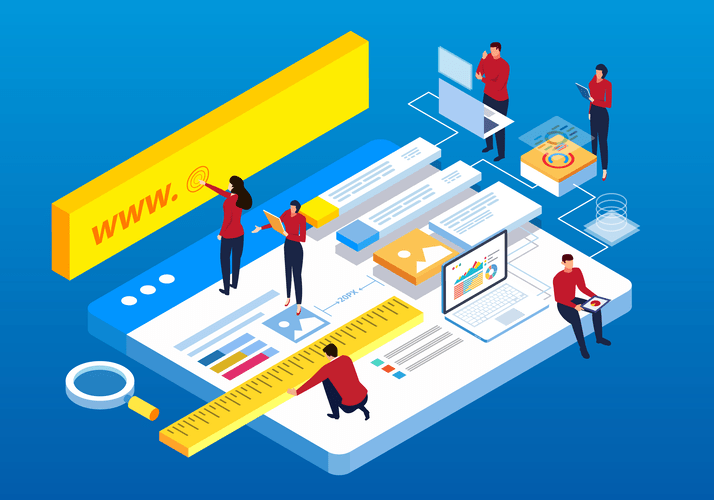The design engineers guide to prototyping
Content
Seeing an early version of the product in action shows you if, and how, it’ll work in the real world. Your fully functional pre-production prototype will undergo testing for product verification and to gain the right certifications required for your product standards. The process of bringing a product to market often requires several iterations of a design in order to meet performance specifications, market acceptance, and production efficiency.
By analyzing the site’s overall navigation, prototypes assist in testing the usability of a website. The most trusted source of information on the business of learning. When the first prototype is complete, you may find flaws that need correcting immediately.
How much does prototype design cost?
A prototype is a preliminary model of something from which later iterations are developed or copied. A successful product design may take several iterations to get just right, and may involve communicating with distributors in order to source necessary materials. Let’s dive into the product life cycle and define the six product phases. Brad was also the co-founder and CEO of SightSpeed, an innovative video and voice communications company. Together with co-founders Aron Rosenberg and Cornell Professor Toby Berger, Brad grew SightSpeed from a university research project into the world’s premier video calling software. Cotman’s desire for crafting perception through environment and experience has led him to support entrepreneurs who solve problems and improve the world around them.

Continue refining until you find a successful solution and implement it. The final stage—implementation—is the culmination of the previous three phases. It’s where you take all your observations, https://globalcloudteam.com/ ideas, and developments and implement a solution. Because of the cost and time required to obtain the necessary electrical certifications, the process is usually delayed until the DVT stage.
Step # 1 – Start with a Proof of Concept (POC) Prototype
Design thinking is a valuable addition to your professional toolbox. Through its four stages, it teaches how to assess situations with an unbiased view, ideate without assumptions, and continually experiment, test, and reiterate for better results. Whether you work in manufacturing or finance, you can utilize design thinking to address pain points.
- In bodystorming, designers rapidly prototype ideas, which allows for immediate feedback on how the product works (Oulsavirta et al., 2003).
- It consists of five stages that aren’t necessary linear but require the designer to go back and forth in order to create the best learning experience.
- It assists in evaluating the accuracy of a design and locating design flaws ahead of the final stage.
- You can simulate the journey a user might go through by including hyperlinked buttons which lead to another wireframe.
- When it comes to prototyping, failing to prepare is definitely preparing to fail.
- This can lead to a lack of understanding of how the app will be used and perceived by different groups of users.
- Once you’ve designed your prototype and have identified its flaws, you need to protect your intellectual property.
These prototypes are built in later phases when the design features are frozen. Production prototypes help refine production and assembly during new product introduction before manufacturing. The production method used to produce a functional prototype should closely resemble the method intended for full-scale production. A beta prototype is a high-quality model that resembles the desired final design and layout. Beta prototypes are either machined or printed, usually functional, and used for debugging and troubleshooting design flaws.
Prototype is not
The most important advantage of prototyping is that it creates a model of the final product. It can help lure customers to invest in the product prior to any resource allocation for implementation. You can discover design errors and check their correctness before going into production. One of the key aspects of prototyping is that it generates empathy for prospective consumers. In this respect, designing software or designing products for human use are not much different. Any product designed without understanding the customer’s needs can result in unnecessary features, poor designs, and a host of problems.

The objective of the EVT is to combine look-alike and work-like subsystem prototypes made of intended components to meet the functional requirements in the form factor as per your PRD . Please be informed that when you click the Send button Sumatosoft will process your personal data in accordance with our Privacy notice for the purpose of providing you with appropriate information. This site is protected by reCAPTCHA and the Google Privacy Policy and Terms of Service apply. Elements cannot be created or modified in the tool, and all screens and mockups have to be imported. Attention is paid to the core functionality and details such as security issues, safety, and beautiful design can be ignored.
Learn
After settling on a winning concept, prototype development is the next step in product development. In this phase, you transform your drawings and models into physical objects to test form prototype a website and function. Prototype development typically includes thorough testing, iterating the design, and carefully evaluating performance to ensure the prototype is ready for production.

Once your initial testing is complete, you’re ready to begin producing the final product concept and launch it to your customer base. During the initial design phase, project stakeholders work together to produce a mockup of the product based on the MVP prototype. The design should be created with the target audience in mind and complement the key functions of your product. Once these ideas have been defined, it’s time to begin building your minimum viable product with initial prototyping. To validate a product concept, consider documenting ideas in the form of a business case. This will allow all team members to have a clear understanding of the initial product features and the objectives of the new product launch.
Native prototyping tools
The amount of time required for a prototype development is strongly influenced by the ease of use and learnability of the tool itself. The term prototype is used in many spheres of life starting from healthcare and finishing with manufacturing. Prototyping in software engineering means the activity of creating models of software apps, which are incomplete versions of software programs.
